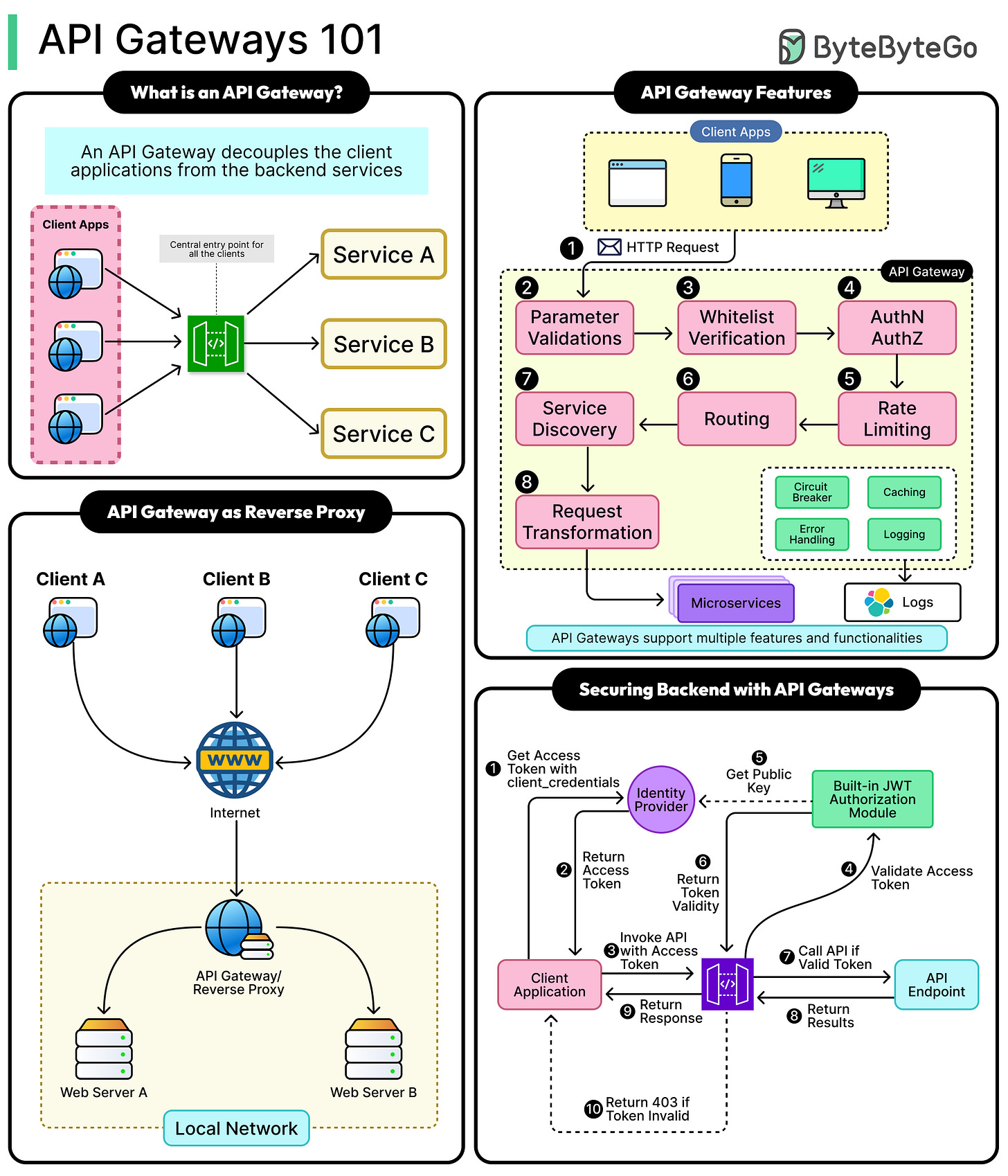API Gateways 101: The Core of Modern API Management & Security
Modern software systems rarely exist as a single, massive program anymore.
A decade or two ago, most applications were built as monoliths. Everything from the user interface to business logic to database access lived inside one large codebase. This approach made development straightforward at first, but as applications grew in size and complexity, it became increasingly difficult to maintain and scale. A single change could impact the entire system, and deploying updates meant redeploying the whole application.
To overcome these limitations, the industry gradually shifted toward a service-based architecture. Instead of one big program, systems were broken into smaller, independent services. Each service handles a specific function, such as user authentication, payments, or notifications. These microservices communicate with each other using APIs. The result was a more modular, flexible system that could be developed and deployed independently.
However, the service-based architecture brought a new set of challenges. As the number of services grew, so did the number of client-to-service interactions. A simple client request (like displaying a user’s dashboard) might now require data from several microservices. Clients needed to know the location, authentication method, and request format for each service. When services changed or moved, clients also had to be updated. Managing these complexities became complex and error-prone.
This is where the API gateway comes in. Think of the API Gateway as the entry point that sits between clients and the internal services. Instead of calling multiple services directly, the client sends requests to the API gateway, and the gateway takes care of the rest.
Over time, API Gateways have evolved into full-fledged management platforms. They don’t just route traffic, but also handle authentication and authorization, manage multiple API versions, transform protocols and payloads, and provide analytics for monitoring API performance.
In this article, we will look at API gateways in detail, along with their architecture and features.



